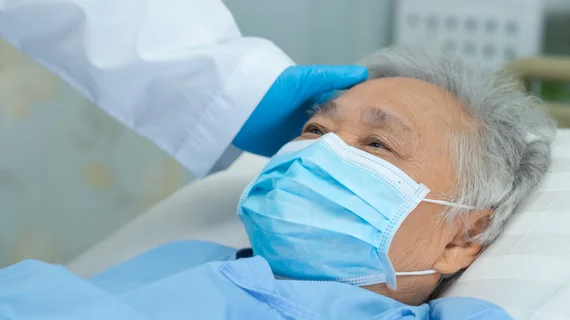Some long COVID patients display thyroiditis on imaging a year after recovery
Abnormalities of the thyroid can now join the ever-growing list of side effects attributed to long COVID, according to research presented recently at the American Thyroid Association 2022 Annual Meeting.
According to the research, in the months following patients’ recovery from severe COVID, nearly 30% of patients had areas of thyroiditis visible on ultrasound [1]. What’s more, for many patients these areas were still present up to 12 months after baseline imaging was acquired.
“The severe acute respiratory syndrome coronavirus‐2 (SARS‐CoV‐2) pandemic disease (Covid‐19) affects thyroid function via multiple mechanisms,” first author Ilaria Muller, MD, PhD, an endocrinologist at the University of Milan in Italy and co-authors explained. “We aimed to better characterize it and to follow its evolution over time.”
To do this, Muller and colleagues analyzed the cases of 183 patients with no known history of thyroid dysfunction who had been hospitalized due to severe cases of COVID. Of these patients, 65 underwent thyroid ultrasound exams within three months of their infection and 17 completed thyroid 99mTc or I123 uptake scans, in addition to thyroid labs.
Of the 65 patients with ultrasound imaging, 28% had areas of thyroiditis. More than half of those patients also had low TSH levels and were said to also have elevated serum concentrations of FT4. Thyroid 99mTc/I123 uptake was reduced in 14 out of 17 patients.
Follow-ups completed at 6 and 12 months revealed that 13 out of 15 (87%) and 6 out of 12 (50%) patients still had areas of residual thyroiditis, while 4 out of 6 patients still had reduced thyroid 99mTc/I123 uptake at the 9-month mark.
Despite the atypical image findings, patients were said to be asymptomatic. Follow-ups also showed that the areas of thyroiditis were reducing over time, and 99mTc/I123 uptake appeared to be recovering as well.
Though it is not yet clear why some COVID patients develop thyroiditis and some do not, the researchers maintained that their findings “support the hypothesis of a direct thyroid gland involvement in SARS‐CoV‐2 infection.”
The study abstract is included in the ATA meeting’s program and can be found here (Oral 12).

